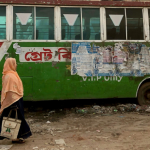For many organisations working with legal rights and vulnerable communities, breaking down the complexity of the law into easily accessible content for diverse users and stakeholders can be a challenge. Prompted by this realisation, iProbono’s team in Nepal has been working with different partners to explore the intersection of the law with design tools in the context of Sexual and Reproductive Health Rights (SRHR). This process has unfolded since 2018 through workshops and focus group discussions with key stakeholders working in law, healthcare, and policy, along with civil society activists. These collaborations have culminated in a toolkit that we will be launching in April 2024. This resource aims to make complex legal documents and processes pertaining to SRHR in the country easier for people to engage with and access, and will be made available online free of cost.
These outcomes are part of our Economic, Social and Cultural Rights (ESCR) program in Nepal, which bridges the gap between justiciable fundamental rights and their poor implementation on the ground. In theory, reproductive rights are guaranteed in Nepal’s constitution as fundamental rights, and abortion is legal under circumstances regulated by the Safe Motherhood and Reproductive Health Rights Act 2018 and the National Penal Code 2017. However, the majority of people seeking abortion are unaware of its legal status in the country.[1]
As our collaborator Dr Mara Malagodi, a Reader in Law at Warwick Law School, points out, “From the perspective of comparative constitutional law, Nepal is a fascinating case study for sexual and reproductive rights. On the one hand, its 2015 constitution is one of the few documents in the world to protect these rights. On the other, their implementation has remained uneven in terms of ordinary legislation and policymaking. Our legal design toolkit seeks to address this contradiction and help realise the full potential of sexual and reproductive rights by harnessing the power of visual communication as an advocacy tool.”
Along with our Nepal-based partners, the Law and Policy Forum for Social Justice (LAPSOJ), we partnered with Dr Malagodi, and Dr Sabrina Germain and Emily Allbon of the City Law School, University of London. Our collaboration was inspired by their work and expertise in the field of legal design (see, for instance, Allbon’s tl;dr gallery), which offered a creative and effective approach towards access to justice. The partnership, in collaboration with the Forum for Women, Law and Development, conducted several workshops on legal design and SRHR.[2] During one such workshop, the team worked with participants to develop personas of women impacted by various sexual and reproductive health challenges. These were later illustrated by Nepali artist Kripa Joshi. They offer a visual tool to communicate important issues about reproductive health rights, empowering people to make informed decisions and choices about their bodies and health. They were also an important input in subsequent workshops for jump-starting discussions and coming up with solutions and ideas.
What is legal design, and why is it important?
The efficacy of using design thinking to make the legal system work better for diverse groups has been acknowledged by both legal practitioners and academicians. An early pioneer was Margaret Hagan of the Stanford Legal Design Lab. Hagan developed the Visual Law Library, a collection of resources which showcase how users can better understand the law through interactive, user-friendly content. These include comics and infographics explaining courtroom processes and the justiciable rights of people. Similarly, under its Justice Innovation project, the Lab has published explainers and step-by-step visual guides to help individuals understand how the justice system works.
As these examples demonstrate, accessibility and empathy lie at the heart of legal design. The interdisciplinary interaction of design and law creates a user experience that is based on understanding the needs, challenges, and experiences of all those who interact with the law. As a theory of change, legal design focuses on user-centricity to offer solutions that are functional and inclusive. It is a transformative development in legal practice to fundamentally reimagine the way the legal system serves the people it was created for.
“Working within legal design is always rewarding. Like teaching, the best bit is arguably when you get to see that final flash of understanding after you’ve made a challenging or difficult concept become clear, and the individual can see a way forward to answer a question, to reason something out or to take a specific action. However, within design, the whole human-centred process of working in collaboration with those who are either the end-user or one of many stakeholders in that experience makes you wonder why we have any other way of working,” explains Allbon.
While a legal design approach can include replacing complex legal jargon with interactive features such as storytelling and visual illustrations, there is more to it than that. It is also about deploying information design fundamentals about how information is processed and formatted. An example is the extensive work carried out in the sphere of contracts, using a human-centred approach to make legal agreements and contracts more accessible, and ensure users actually understand what they are agreeing to. Pathbreaking examples include Robert de Rooy’s contracts for fruit-pickers and Camilla Andersen’s employment contract for the global infrastructure company Aurecon. These ‘comic contracts’ are legally binding and offer a way to improve the transparency of legal documents, reduce confusion, and empower individuals to make informed decisions. The WorldCC Contract Design Pattern Library also shares examples of design techniques which can be utilised for contracts.
Legal design to advance sexual and reproductive health rights
This potential of legal design in demystifying difficult subjects was the reason we decided to employ the approach in the crucial area of SRHR. Tools like comics and personas make discussion of legal information and services concerning SRHR issues possible, without inviting stigma or using intimidating language. In developing the toolkit, Dr Malagodi and her colleagues applied design-thinking methodologies to SRHR advocacy. The artist Kripa Joshi created case explainer comics based on storyboarding of important judgments, so that readers can understand the events and why they are significant. She also brought to life six personas that were created within the workshops. These give deeper insights into the real-life experiences of women from different ethnolinguistic, caste, religious, educational backgrounds and geographies, all in need of accessing reproductive and sexual health services.
Our commitment to realising ESCR and enabling access to SRHR in Nepal continues after the launch of the toolkit. We will disseminate the toolkit among key stakeholders to support and strengthen the on-going movement to secure reproductive rights. Eventually, we aim to facilitate capacity and evidence-building to achieve the outcome of full decriminalisation of abortion in Nepal.
[1] The Supreme Court of Nepal delivered two landmark judgments on reproductive rights. Lakshmi v Government of Nepal (https://reproductiverights.org/wp-content/uploads/2021/07/Laxmi-dhitta1-endnote.pdf) and Prakash Mani Sharma v Gov’t of Nepal (https://www.escr-net.org/caselaw/2014/prakash-mani-sharma-v-govt-nepal-scn-writ-no-064)
[2] These workshops received financial and technical support from Advocates for International Development’s ROLE UK Programme and UKAid.







